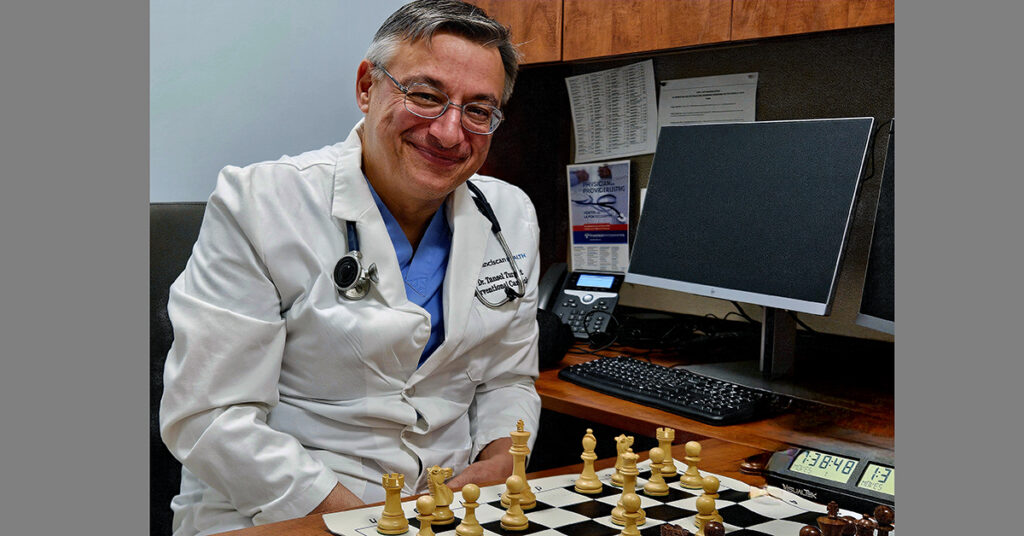Community Foundation of Northwest Indiana has a broad impact.
by Lauren Caggiano
Everyone benefits when our communities are healthier and stronger. That's what drives the Community Foundation of Northwest Indiana (CFNI) in its everyday work.
CFNI is a not-for-profit 501(c)(3) organization that provides leadership and resources for the enhancement of health and the quality of life in Lake and Porter counties.
“At the heart of CFNI's charitable endeavors is operation of Community Healthcare System, comprising three not-for-profit hospitals: Community Hospital in Munster; St. Catherine Hospital in East Chicago; and St. Mary Medical Center in Hobart,” says Mary Ann Shacklett, senior vice president and chief financial officer for CFNI.
Shacklett is proud to share the system's successes. Among them, Community Hospital has been named among America's 100 Best in multiple specialties by HealthGrades and has been named a HealthGrades Distinguished Hospital for Clinical Excellence for the 11th consecutive year. Community Hospital is the only hospital in the state of Indiana to be recognized 11 years in a row for superior clinical excellence.
But the foundation is invested in more than just hospitals. According to Shacklett, the Community Cancer Research Foundation “offers moral support to patients and families.” The not-for-profit offers cancer detection, diagnosis, treatment, education and prevention, and promotes the acquisition of knowledge through clinical research.
“And via the foundation's Cancer Resource Centre, people affected by cancer can receive free support, complementary therapies and educational services,” she says
The hospital system is also doing its part to fight the obesity epidemic. Community Hospital Fitness Pointe, located just down the road from Community Hospital, is a medically based, 73,000-square-foot fitness center designed to help individuals achieve lifelong health and fitness through innovative, quality programs, state-of-the-art equipment and highly credentialed staff. For example, Shacklett cites in-house classes on nutrition.
The hospital system also takes the fight against obesity outside of its facility walls. A program in the local school systems helps children make healthy choices, she explains. Surveys have indicated that childhood obesity is an issue plaguing Northwest Indiana, she notes. To that end, staff work with school staff to educate them on best practices in nutrition.
On the other end of the demographic spectrum, the Community Foundation of Northwest Indiana operates Hartsfield Village, a retirement community in Munster that provides independent living, assisted living, memory care residence and skilled nursing care, as well as specialized Alzheimer's disease care. The facility consists of 106 independent units, 71 assisted living units, 24 memory support units and 112 nursing care units.
Caring for the whole person means considering their other needs. In this case, it's cultural. The foundation offers support in the form of operational management for the Center for the Visual and Performing Arts in Munster. A theater within the center boasts a performing arts series, a children's theater program (Theatre for Young Audiences) and hosts special programs that enhance cultural opportunities in Northwest Indiana.
“We try to cater to the population so they don't have to go to Chicago for entertainment,” Shacklett says about the theater's robust programming.
Speaking of robust, the foundation's economic impact on the region is significant. “Since 2001 our three hospitals have spent over $630 million in buildings and equipment,” Shacklett says. The hospital system's employment of 6,000 workers is also a boon to the local economy. There are currently about $1 billion in assets in the system.
According to Shacklett, the hospital system is on solid financial ground. “Over the years we have really strengthened the stability of our bond rating, as it was upgraded four times in five years.
Shacklett credits the community support and its recognition of the system's quality care. That means treating each patient–regardless of socioeconomic status–with a world-class experience. The hospital system reported $115 million in charity care to the community last year. This community investment is in response to dire conditions in parts of the service area. For example, the East Chicago area is a medically underserved and impoverished location. Nearly 30 percent of patients at St. Catherine's are on Medicaid, Shacklett says.
These statistics underline the need for community support. As health care resources become scarce and costs skyrocket, charitable contributions help the system maintain or expand its services.
In Shacklett's words, “Charitable contributions will become more important in the changing health care environment.”
For more information, visit www.comhs.org.


